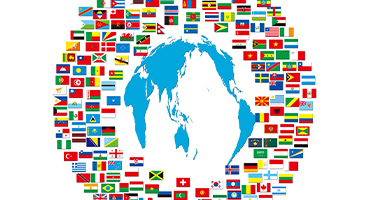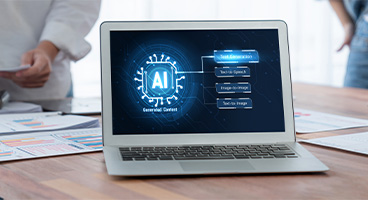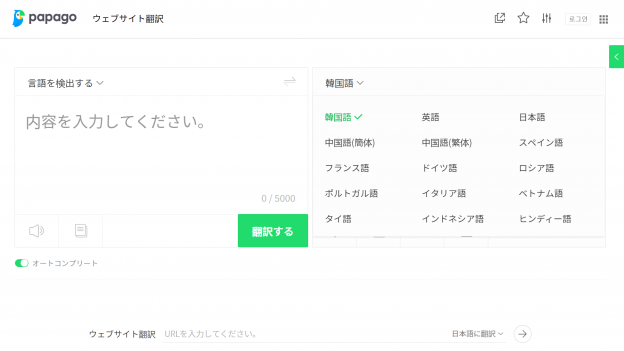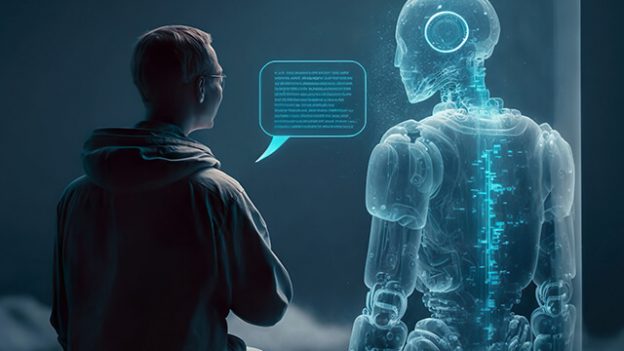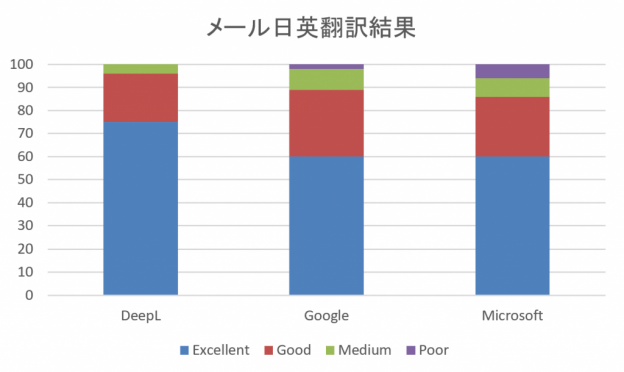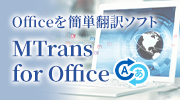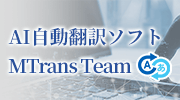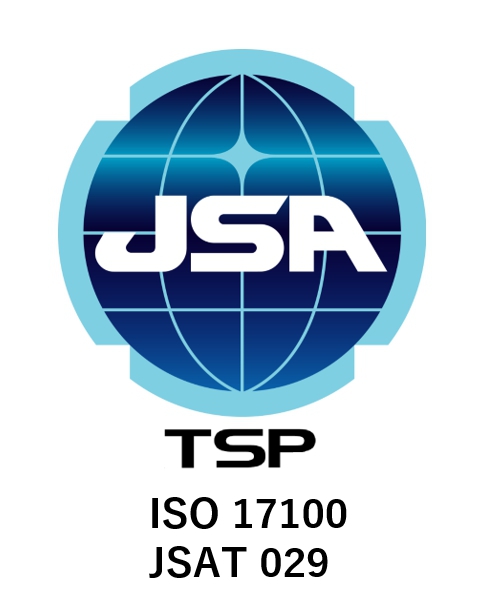
The latest automatic translation service, DeepL, is attracting attention. This article focuses on how helpful DeepL is for translating academic papers, explaining its accuracy and points to note. Additionally, it introduces efficient ways to read papers using OpenAI's ChatGPT and Microsoft's Copilot.
- Table of Contents
-
- 1. What are the characteristics of academic paper translation?
- 1-1. Features of Paper Translation
- 1-2. Differences from General Text Translation
- 1-3. Examples of Phrases and Expressions Specific to Certain Fields
- 2. Proofreading Method After Paper Translation
- 3. Can DeepL translate academic papers?
- 4. Accuracy When Translating Papers with DeepL
- 5. Procedure for Translating Papers with DeepL
- 6. How to Read English Papers Efficiently
- 6-1. Uploading Files to ChatGPT
- 6-2. Accessing URLs with ChatGPT
- 6-3. Accessing a Web Page with Microsoft Edge Browser
- 7. Summary
1. What are the characteristics of paper translation?

1-1. Features of Paper Translation
Translation of academic papers is considered to be more challenging compared to general translation. The reason for this is that academic papers often contain many specialized elements and content. In general translation, it is common to deal with everyday conversations or general texts, so as long as one has relatively good translation skills, it can be done without issues. However, academic paper translation requires a deep understanding of specific academic fields and specialized knowledge.
Academic papers summarize research results and scholarly discussions, and their content requires a high level of expertise. For example, in papers from fields such as medicine, engineering, and economics, specialized terms and concepts frequently appear. A high level of expertise is necessary to accurately understand and appropriately translate these specialized terms and concepts.
In addition, attention must be paid to style and expression in paper translation. Academic papers are scholarly documents and have characteristics that differ from general writing. For example, objective expression may be required in papers. Furthermore, there are specific rules and formats, such as logical development and proper handling of citations, that are unique to academic papers. To translate these elements appropriately, it is necessary to be familiar not only with translation skills but also with the characteristics of scholarly documents.
1-2. Differences from General Text Translation
Papers often use complex sentences and long phrases to address specialized content. This is because papers are academic documents intended to provide accurate and detailed information. In specialized fields, complex words and technical terms may be required to explain specific concepts or theories.
Papers may use specialized terminology or terms that have not yet been established. Terms that are not yet established may be used to represent new research or concepts, but their meanings and definitions may not be clear. Translators need to have specialized knowledge and research skills to properly understand these terms and convey them clearly to the reader.
Translation of academic papers requires advanced skills and knowledge from translators, as they deal with specialized content and complex expressions. Translators must accurately understand the intent and context of the original text and appropriately translate technical terms. Additionally, flexibility and research ability to adapt to new terms and concepts are also necessary.
1-3. Examples of Phrases and Expressions Specific to Certain Fields
In translating papers in the medical and pharmaceutical fields, it is important to accurately translate expressions specific to the field. When expressing susceptibility to diseases, the Japanese phrase "~しやすい" is translated into English using terms such as be predisposed to, be prone to, or be susceptible to, depending on the context. For example, "高齢患者は感染症にかかりやすい" is expressed as “Elderly patients are more susceptible to infections.”
In describing symptoms, it is common to use medical expressions such as "present with" or "exhibit" to convey "~を呈する." For example, "The patient presented with acute symptoms" is used to mean the patient showed acute symptoms. Additionally, when describing treatment effects, phrases like "demonstrate efficacy" or "show effectiveness" are used to translate "有効性を示す," as in "The drug demonstrated significant efficacy."
Statistical expressions are also indispensable in medical papers. "Statistically significant" is written as statistically significant (p<0.05)として表記し、「相関する」はbe correlated withやshow correlationを用いて表現します。これらの定型表現を適切に使い分けることで、査読者に評価される質の高い英文に仕上がります。
2. Proofreading Methods After Paper Translation
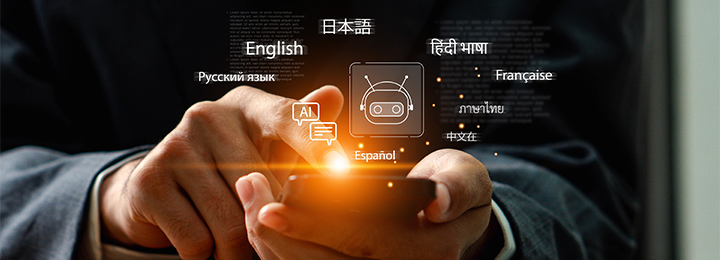
One effective method for proofreading after thesis translation is "review." This involves the translator themselves or a third-party expert rechecking the translated text to verify contextual consistency, the use of technical terms, and the appropriateness of paraphrasing. During the review, subtle nuances that are often overlooked during translation and unnatural expressions can be identified, enabling the accurate conveyance of the original thesis's intent. In particular, reviews conducted by translators with specialized knowledge are highly effective in refining the text while maintaining content accuracy.
Next, "native check" is the process where a native English speaker verifies whether the translated text is natural and easy to read. This mainly involves checking for grammatical errors, unnatural vocabulary, and appropriate punctuation. This step is especially important when the paper is intended for publication in international academic journals, as it ensures smooth expressions that do not cause stress to the reader. However, since native speakers are not always experts in the specific field, attention must be paid to the accuracy of the content. In some cases, a double check by a proofreader with specialized knowledge is desirable.
Finally, gaining attention in recent years is proofreading using "LLM (Large Language Models)", that is, generative AI. By using tools like ChatGPT, you can quickly refine a large amount of text into natural English and unify terminology. These models possess extensive contextual understanding and expressive capabilities, allowing them to suggest revisions tailored to the style of academic papers. Additionally, they are efficient in terms of cost and time, greatly contributing to quality improvement at the draft stage. However, final verification by humans is essential for fact-checking and the accuracy of detailed technical terms. It is advisable to use AI output as a supplementary tool rather than accepting it uncritically.
[Related Links]
Translation Proofreading – How to Achieve High-Quality Translations
3. Can DeepL translate academic papers?

In recent years, the accuracy of translation tools has improved dramatically. Among them, a translation tool called DeepL has garnered particular attention. DeepL is a machine translation service developed by DeepL GmbH, based in Germany, in 2017. It can be used online for free, but due to limitations, a paid plan is necessary to access the full features. For more details on the differences between DeepL, its free version, and its paid version, please see the articles below.
What is DeepL? A Comparison with ChatGPT
What's the Difference between DeepL's Free Version and Paid Version (DeepL Pro) – Pricing, Security, Character Count
Scientific and technical papers are considered to be difficult to translate due to the presence of specialized knowledge and terminology. However, DeepL has strong translation capabilities for such papers and has received high praise. It has become a very popular tool among students and researchers.
4. Accuracy When Translating Papers with DeepL

DeepL excels in its ability to translate natural and fluent text. It can provide high accuracy in translating general texts and documents with few technical terms. However, there is a challenge in achieving accurate translations for papers that contain a lot of specialized terminology.
Especially in medical translation, the abundance and complexity of specialized terminology pose challenges. However, evaluations by Human Science indicate that DeepL has demonstrated the highest translation accuracy in both English-Japanese and Japanese-English compared to Google, Amazon, and Microsoft. It is important to note that, like other machine translations, DeepL also has issues with mistranslations and omissions. Therefore, after performing machine translation, human verification and correction (post-editing) are necessary. For more details on DeepL's translation accuracy in medical translation, please refer to the articles below.
What is the translation accuracy of DeepL in medical translation? Comparison results with Google/Microsoft/Amazon
Has the accuracy of medical translation improved - Comparing DeepL and Google Translate, 2020 and 2023
DeepL can currently play a supportive role in translating academic papers. While it may lead to time savings, it is important to keep in mind that verification is necessary for documents with many technical terms.
5. Procedure for Translating Papers with DeepL

1. Open the DeepL file translation page in your web browser (https://www.deepl.com/translator/files).
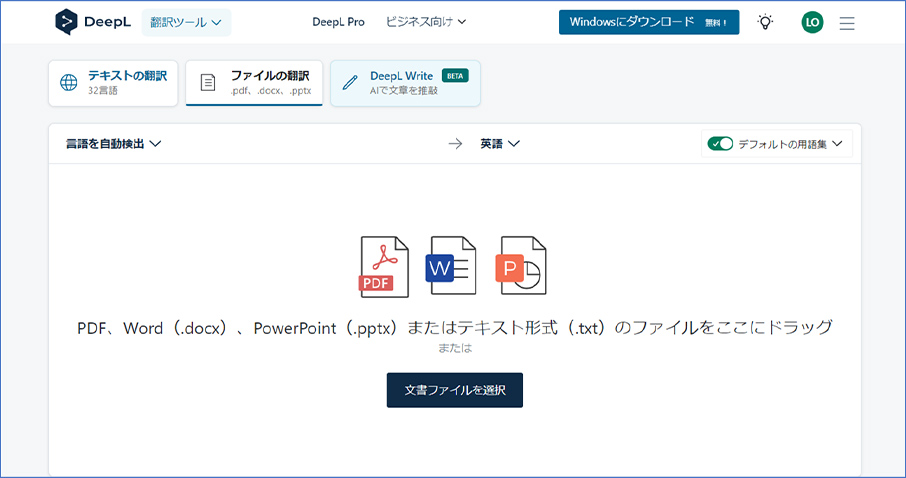
2. Click the language selection button on the right to choose the language after translation.
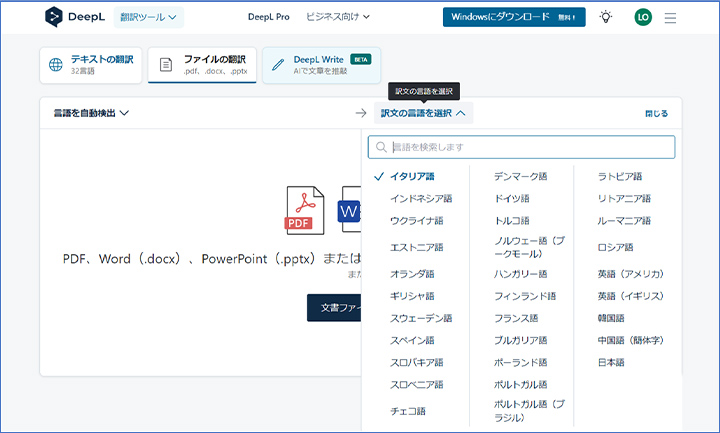
3. Drag and drop the file to be translated.

4. DeepL will translate the file. After that, if you are using the free version of DeepL, you can download the translated file. If you are using the paid version, an editing screen will be displayed in the browser (see the image below). After reviewing and making corrections to the translation, you can click the download button in the bottom right to download the translated file.
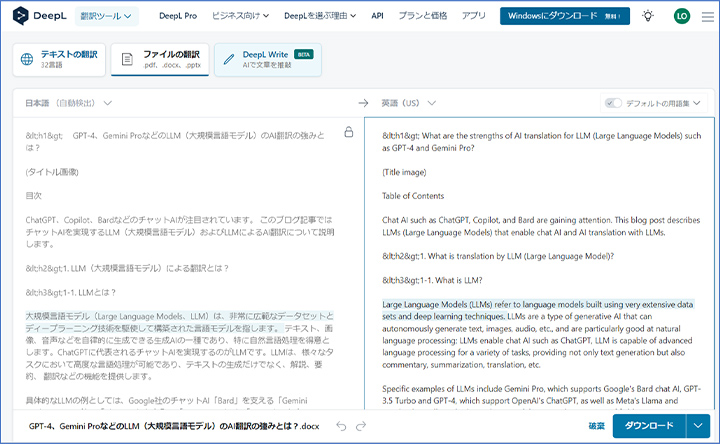
6. How to Read English Papers Efficiently

With ChatGPT, you can upload files and access URLs. Additionally, Microsoft Edge browser's Copilot uses generative AI equivalent to ChatGPT to summarize web pages. By utilizing these features, you can read English papers in a short time and efficiently gather the information needed for your research. This section explains the steps to summarize English papers using each service and output the results in Japanese.
6-1. Uploading Files to ChatGPT
1. Access ChatGPT (https://chatgpt.com/) using a web browser.
2. Drag and drop the file to upload it.
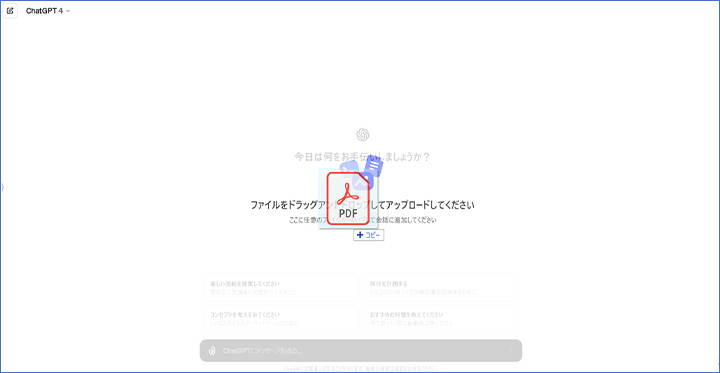
3. Type "Summarize in Japanese" and press the Enter key. ChatGPT will read the contents of the file and output a summary.
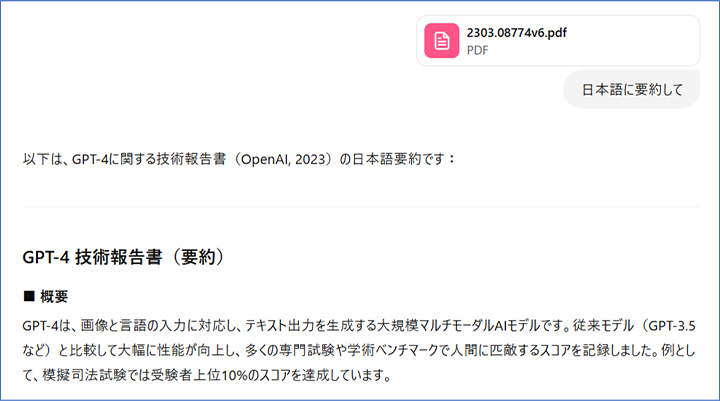
6-2. Accessing URLs with ChatGPT
1. Access ChatGPT (https://chatgpt.com/) using a web browser.
2. Type "Summarize <URL> in Japanese" and press the Enter key. ChatGPT will access the specified URL and provide a summary.
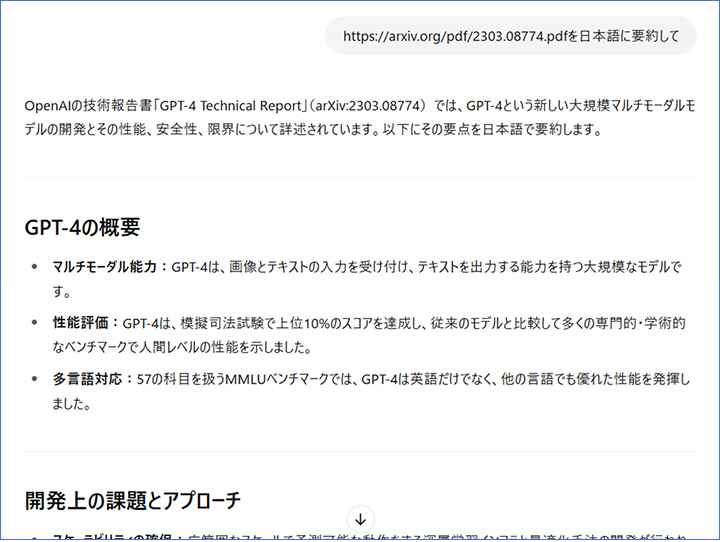
6-3. Accessing Web Pages with Microsoft Edge Browser
1. Access the URL of the paper you want to translate using the Edge browser.
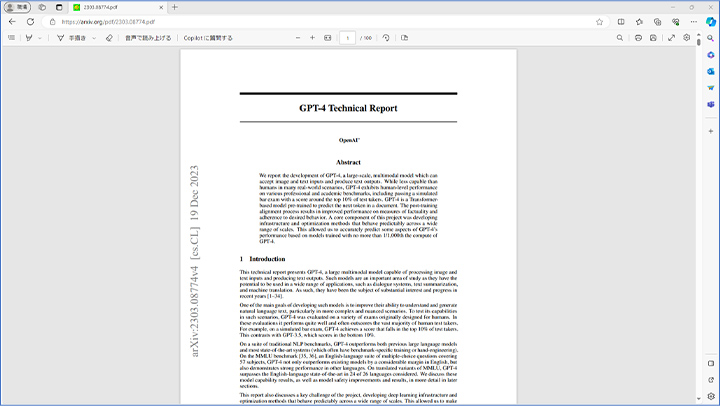
2. Click on the "Ask Copilot" button in the toolbar. A chat window will appear on the right side of the screen.

3. If the "Workplace" button and the "Web" button are displayed at the top of the chat screen, select "Web" first, then enter "Summarize in Japanese" in the text box at the bottom and press the Enter key.
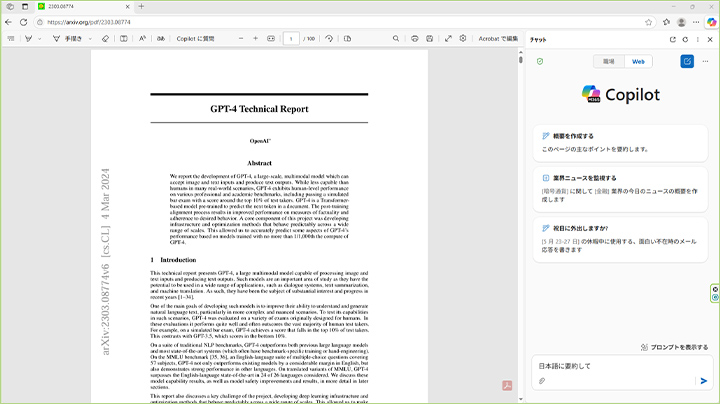
4. Copilot summarizes and outputs the content of the page.
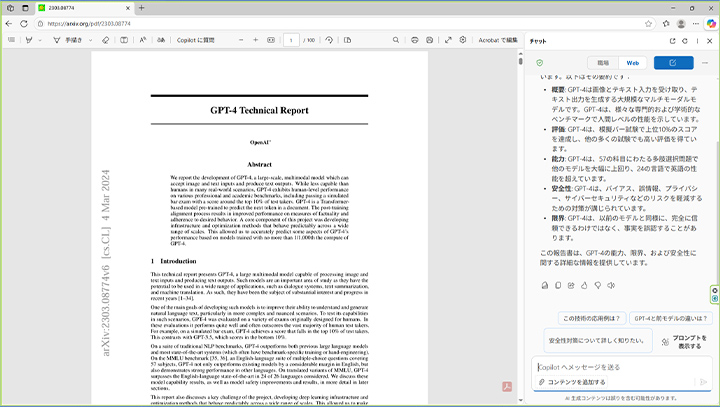
7. Summary
Translation of academic papers requires specialized knowledge and terminology, making it more challenging than the translation of general texts. DeepL has received high praise for its translation of scientific and technical papers, excelling in its ability to generate natural and fluent text. However, there are also concerns about the risk of mistranslations and omissions in documents with a lot of technical terms. Therefore, human review and correction after translation are necessary. Nevertheless, tools like DeepL, ChatGPT, and Copilot are extremely useful for researchers and students in efficiently gathering information.
At Human Science, we offer the automatic translation software MTrans for Office and MTrans for Trados, which can utilize DeepL and ChatGPT. ChatGPT can be used not only as a translation engine, but also for transcription, rewriting, and proofreading, depending on the prompt. Try out MTrans for Office and MTrans for Trados with our 14-day free trial offer. Please contact us for more information.
Features of MTrans for Office
① Unlimited number of translatable files and glossaries with a flat-rate system
② One-click translation from Office products!
③ Security is assured with API connections
・We also offer SSO, IP restrictions, and more for customers who want further enhancements
④ Support in Japanese by Japanese Companies
・Support for security check sheets is also available
・Payment via bank transfer is available
MTrans for Office is an easy-to-use translation software for Office.
Features of MTrans for Trados
- ① Simultaneous translation using multiple machine translation engines, such as DeepL and Google.
- ② Automatic application of specific terminology to machine-translated text. Centrally managed term glossaries, regardless of the machine translation engine
- ③ String replacement, regular expression replacement, and automatic correction of translation style, notation, and expressions using ChatGPT
- ④ Automatic revision of fuzzy matches in the translation memory
- ⑤ Preservation of the original formatting and tags during machine translation
What is the Trados-dedicated machine translation solution MTrans for Trados?






